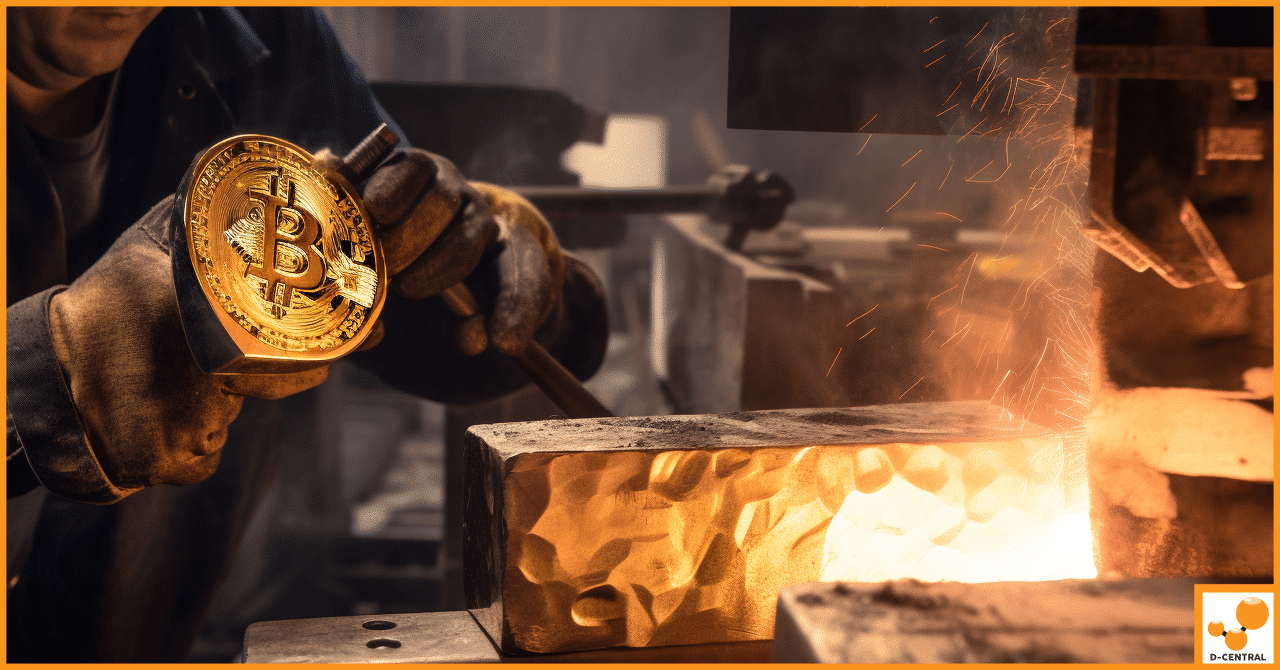
Mastering the Crypto Frontier: Essential Insights into Top-Tier Mining Equipment
Cryptocurrency mining has undergone a remarkable transformation since the inception of Bitcoin in 2009. What began as a niche activity
4479 Desserte Nord Autoroute 440, Laval, QC H7P 6E2

In the rapidly evolving world of cryptocurrency mining, Application-Specific Integrated Circuit (ASIC) miners have emerged as the linchpin of the industry. These specialized devices are engineered to perform the singular task of mining cryptocurrencies like Bitcoin, offering unparalleled efficiency and speed compared to general-purpose hardware such as CPUs or GPUs. The advent of ASIC miners has significantly heightened the stakes in the mining arena, transforming it into a highly competitive and lucrative field. The performance and longevity of these sophisticated machines directly influence the profitability of mining operations, underscoring the critical importance of regular and effective maintenance.
However, the necessity of maintaining ASIC miners introduces a pivotal dilemma for miners: Should one embark on the journey of Do-It-Yourself (DIY) maintenance, armed with a toolkit and an abundance of online tutorials, or is it wiser to entrust these precious assets to the hands of professional maintenance services? This decision is far from trivial. On one hand, DIY maintenance offers a sense of control and the potential for cost savings, appealing to the technically inclined and those with a penchant for hands-on problem-solving. On the other hand, professional services promise expertise, specialized equipment, and potentially greater peace of mind, albeit at a price.
Navigating this choice requires a deep dive into the nuances of ASIC maintenance, weighing the pros and cons of each option against the backdrop of one’s technical skills, available time, and financial considerations. As we explore the best practices for maintaining these critical components of the cryptocurrency mining ecosystem, we aim to illuminate the path for miners standing at this crossroads, guiding them towards making an informed decision that best suits their individual needs and circumstances.
Maintaining ASIC miners is not just about keeping the machines running; it’s about ensuring they operate at peak efficiency, prolonging their lifespan, and safeguarding your investment in the competitive realm of cryptocurrency mining. Regular maintenance is the cornerstone of achieving these goals, directly impacting both the longevity and efficiency of ASIC miners.
The relentless demand placed on ASIC miners, operating 24/7 to solve complex cryptographic puzzles, subjects them to intense wear and tear. Without regular maintenance, dust accumulation, overheating, and outdated firmware can significantly degrade performance, leading to increased electricity consumption for lower mining outputs. Moreover, neglect can shorten the lifespan of these expensive machines, necessitating costly replacements that could have been avoided.
Regular maintenance ensures that ASIC miners remain in optimal condition, maximizing efficiency and reducing the risk of unexpected downtime. It’s a proactive approach that maintains high hash rates, minimizes power consumption, and extends the operational life of the hardware, ultimately protecting and enhancing the profitability of mining operations.
Effective ASIC maintenance encompasses a variety of tasks, each critical to the miner’s performance and longevity. Here are some of the most common maintenance tasks that should be performed regularly:
By adhering to these routine maintenance tasks, miners can significantly enhance the performance and extend the lifespan of their ASIC miners, ensuring that their mining operations remain profitable and sustainable in the long run.
For many in the cryptocurrency mining community, the decision to undertake ASIC maintenance personally is driven by a blend of economic reasoning and a desire for hands-on involvement. However, navigating the DIY route comes with its set of challenges and rewards.
Cost Savings: One of the most compelling reasons to opt for DIY maintenance is the potential for cost savings. Professional maintenance services can be expensive, especially for large-scale operations or frequent servicing needs. By taking on maintenance tasks themselves, miners can reduce operational costs, which is crucial for maintaining profitability in the competitive mining landscape.
Learning Opportunity and Deeper Understanding of Your Hardware: Engaging in DIY maintenance offers miners the chance to gain a profound understanding of their ASIC hardware. This hands-on experience can be invaluable, providing insights into the inner workings of the machines and enabling miners to troubleshoot issues more effectively. Over time, this knowledge can contribute to more informed decisions regarding hardware modifications, optimizations, and purchases.
Risk of Damaging the Hardware: Perhaps the most significant downside of DIY maintenance is the risk of inadvertently damaging the hardware. ASIC miners are sophisticated and delicate machines; without the proper knowledge and care, attempts at maintenance can lead to costly mistakes, from minor damages that affect performance to major issues that render the machines inoperable.
Time-Consuming Process: Maintenance tasks, especially when performed by individuals with limited experience, can be incredibly time-consuming. The time invested in learning, troubleshooting, and performing maintenance could detract from other aspects of mining operations or personal commitments.
Potential to Void Warranty: Many ASIC manufacturers stipulate that unauthorized repairs or modifications can void the warranty. DIY maintenance, particularly when it involves opening the machine or replacing parts, could result in losing warranty coverage, leaving miners without support in the event of hardware failure.
Technical Skills Needed:
Tools and Resources Required for DIY Maintenance:
Embarking on DIY ASIC maintenance requires a careful consideration of these advantages and disadvantages. Miners must assess their technical abilities, the value of their time, and the potential risks involved to determine if the DIY approach aligns with their operational goals and capabilities.
For many cryptocurrency miners, the complexity and critical nature of ASIC maintenance necessitate turning to professionals. This approach, while potentially more costly upfront, offers several compelling advantages that can contribute to the overall health and longevity of mining operations.
Expertise and Experience: Professional maintenance services bring a wealth of expertise and experience to the table. These professionals have likely worked on a wide array of ASIC models across different brands, encountering and solving a multitude of hardware issues. This depth of knowledge ensures that maintenance is conducted efficiently and effectively, with a lower risk of oversight or error compared to the DIY approach.
Access to Specialized Tools and Diagnostics: Professional services are equipped with specialized tools and diagnostic software that may not be readily available to individual miners. These tools can provide a more thorough analysis of the hardware’s condition, identifying potential issues before they escalate into major problems. Additionally, the use of professional-grade equipment can often lead to more precise and less invasive repairs.
Warranty Preservation: Many ASIC manufacturers require that maintenance and repairs be conducted by authorized professionals to maintain warranty coverage. By opting for professional maintenance, miners can ensure that their hardware remains under warranty, providing a safety net against defects and failures that might otherwise result in significant financial loss.
Higher Costs: The most significant drawback of professional maintenance is the cost. Professional services, especially those authorized by manufacturers, can be expensive. For miners operating on thin margins, these costs can eat into profits, making it a less attractive option compared to DIY maintenance. However, it’s important to weigh these costs against the potential savings from avoiding costly mistakes and extending the lifespan of the hardware.
Dependency on the Service Provider’s Schedule: When relying on professional services, miners are subject to the service provider’s schedule and availability. During peak times or in regions with fewer service options, this can lead to delays in maintenance, potentially resulting in downtime for the mining operation. This dependency requires careful planning and scheduling to minimize impact on mining activities.
Choosing to hire a professional for ASIC maintenance is a decision that balances the need for expertise and warranty preservation against the higher costs and potential scheduling challenges. For many, the peace of mind and assurance of quality provided by professional services justify the investment, ensuring that their mining operations continue to run smoothly and efficiently.
When it comes to maintaining ASIC miners, the decision between DIY and professional services isn’t just about preference or skill—it’s also a financial one. Understanding the cost implications of both approaches is crucial for miners who aim to maximize their profitability while ensuring their hardware remains in top condition.
DIY Maintenance Costs:
Professional Maintenance Costs:
Long-term Financial Implications:
The choice between DIY and professional ASIC maintenance involves a careful consideration of both immediate and long-term costs. DIY maintenance may appeal to those with the time, skills, and inclination to learn, offering potential cost savings over time. However, for miners who prioritize uptime, hardware longevity, and peace of mind, the investment in professional maintenance services can be a financially sound decision, ensuring that their mining operations remain profitable and sustainable in the long run.
Deciding between DIY and professional ASIC maintenance is a pivotal choice for cryptocurrency miners, impacting not just the immediate health of their mining operations but their long-term sustainability and profitability as well. This decision should be informed by a careful consideration of several key factors.
Time Availability: One of the most critical considerations is the amount of time you can realistically dedicate to maintenance tasks. DIY maintenance can be time-consuming, especially for those new to the process. Assessing your current commitments and the flexibility of your schedule is crucial. If your mining operation is a side venture or if you have other significant time constraints, the time investment required for DIY maintenance might be impractical.
Technical Skill Level: Your current level of technical expertise plays a significant role in determining the feasibility of DIY maintenance. Those with a background in electronics or who are comfortable with technical troubleshooting may find the DIY route more accessible and less daunting. Conversely, for individuals without this experience, the learning curve can be steep, potentially leading to mistakes that could damage the hardware or reduce its efficiency.
Cost-Benefit Analysis: Consider the financial implications of both options. While DIY maintenance can offer cost savings, especially if you already possess the necessary tools, it’s essential to factor in the potential costs of mistakes and the value of your time. Professional maintenance, though more expensive upfront, comes with the assurance of expert care, potentially saving money in the long run by extending the lifespan of your ASIC miners and preserving their efficiency.
Evaluating your specific situation and needs is the next step in making an informed decision. Consider the following questions to guide your assessment:
Ultimately, the decision between DIY and professional ASIC maintenance hinges on a balance of time, technical ability, and financial considerations. By carefully evaluating your specific needs and circumstances, you can choose the path that best supports the health of your mining operation, aligns with your capabilities, and maximizes your profitability in the competitive world of cryptocurrency mining.
Maintaining your ASIC miners is crucial for ensuring their longevity and efficiency. Whether you decide to undertake maintenance yourself or opt for professional services, following best practices can help you maximize the performance and lifespan of your mining hardware.
For those embarking on the DIY maintenance journey, here are some practical tips to ensure your efforts are as effective and safe as possible:
If you decide that professional maintenance is the right choice for your operation, here’s what to look for in a service provider:
Whether you choose the DIY route or professional maintenance, adhering to these best practices can help ensure that your ASIC miners remain in peak condition, safeguarding your investment and maximizing your mining profits.
Maintaining ASIC miners is a critical component of running a successful and profitable cryptocurrency mining operation. Throughout this discussion, we’ve explored the nuances of choosing between DIY maintenance and hiring professional services, highlighting the importance of regular maintenance in ensuring the longevity and efficiency of your mining hardware. We’ve delved into the advantages and disadvantages of both approaches, providing insights into the cost implications, required skills and tools for DIY maintenance, and what to look for when selecting a professional service.
The decision between undertaking maintenance tasks yourself or opting for professional assistance is not one-size-fits-all. It hinges on a careful evaluation of your time availability, technical skill level, and the cost-benefit analysis specific to your situation. The right choice varies from one miner to the next, influenced by individual needs, capabilities, and the scale of the mining operation.
We encourage all miners to thoroughly assess their maintenance capabilities and needs. Consider the long-term implications of your choice on the performance and lifespan of your ASIC miners. An informed decision-making process, grounded in a clear understanding of your operational goals and personal strengths, is essential for optimizing the health and productivity of your mining hardware.
For those seeking expert advice or professional ASIC maintenance services, D-Central Technologies stands ready to assist. With a wealth of experience in the cryptocurrency mining industry, D-Central offers comprehensive maintenance solutions tailored to your specific needs. Whether you’re navigating the complexities of DIY maintenance or looking for reliable professional services, D-Central Technologies is your partner in maximizing the efficiency and profitability of your mining operation.
Contact D-Central Technologies today to explore how we can support your ASIC maintenance needs, ensuring your mining hardware operates at its best, now and into the future.
What are ASIC miners, and why are they important in cryptocurrency mining?
ASIC miners are Application-Specific Integrated Circuit devices specifically designed for mining cryptocurrencies like Bitcoin. They offer superior efficiency and speed compared to general-purpose hardware, making them critical for profitable mining operations due to their direct impact on performance and longevity.
What are the primary maintenance tasks for ASIC miners?
Primary maintenance tasks include cleaning to prevent dust buildup, updating firmware for optimal performance, inspecting hardware components like fans and connections for wear and tear, ensuring the mining environment’s temperature and humidity are in optimal ranges, and monitoring the hash rate to identify potential issues early.
What are the advantages and disadvantages of DIY ASIC miner maintenance?
Advantages of DIY maintenance include potential cost savings and a deeper understanding of the hardware, which can aid in troubleshooting and optimization. Disadvantages include the risk of damaging the hardware, the time-consuming nature of maintenance, and the possibility of voiding the warranty.
What considerations should be made when deciding between DIY and professional ASIC miner maintenance?
Key considerations include the miner’s technical skill level, time availability, cost implications of both options, and the scale and condition of the mining operation. These factors help determine whether DIY maintenance is practical and cost-effective or if professional services offer a better value proposition.
What are the benefits of hiring a professional for ASIC maintenance?
Professional maintenance services offer expertise and experience, access to specialized tools and diagnostics, and warranty preservation. Their expertise ensures efficient and effective maintenance, potentially saving money in the long run by extending the hardware’s lifespan and preserving its efficiency.
How can D-Central Technologies assist with ASIC miner maintenance?
D-Central Technologies offers comprehensive maintenance solutions tailored to specific needs, providing expert advice and professional services. Whether miners are handling maintenance themselves or seeking professional assistance, D-Central Technologies supports maximizing the efficiency and profitability of mining operations.
DISCLAIMER: D-Central Technologies and its associated content, including this blog, do not serve as financial advisors or official investment advisors. The insights and opinions shared here or by any guests featured in our content are provided purely for informational and educational purposes. Such communications should not be interpreted as financial, investment, legal, tax, or any form of specific advice. We are committed to advancing the knowledge and understanding of Bitcoin and its potential impact on society. However, we urge our community to proceed with caution and informed judgment in all related endeavors.
Related Posts

Cryptocurrency mining has undergone a remarkable transformation since the inception of Bitcoin in 2009. What began as a niche activity

The demand for energy-efficient and eco-friendly solutions is ever-growing in today’s industrial landscape. Metal fabrication shops, a critical part of

In the dynamic and ever-expanding universe of cryptocurrencies, Bitcoin and Ethereum have emerged as the leading figures, often drawing comparisons